
Person of the Week
Angela Sage Larsen
Author, Writer, Illustrator, Composer, Coach, and Creator of Petalwink the Fairy Books and Musical Brand and the Fifties Chix Series
I asked myself what I wanted to do for fun when I retired. So then I asked myself, “Why am I waiting until I am retired? Why don’t I do that for a living?” So I started the Petalwink Brand and wrote a series for young teens called The Fifties Chix.
1. What led you to the mission of being an author, writer, illustrator, composer, coach, and creator of Petalwink the Fairy Books and Musical Brand and the Fifties Chix Series?
Immediately after college, I asked myself what I wanted to do for fun when I retired. The answer was that I would like to be painting and doing artwork for fun. So then I asked myself, 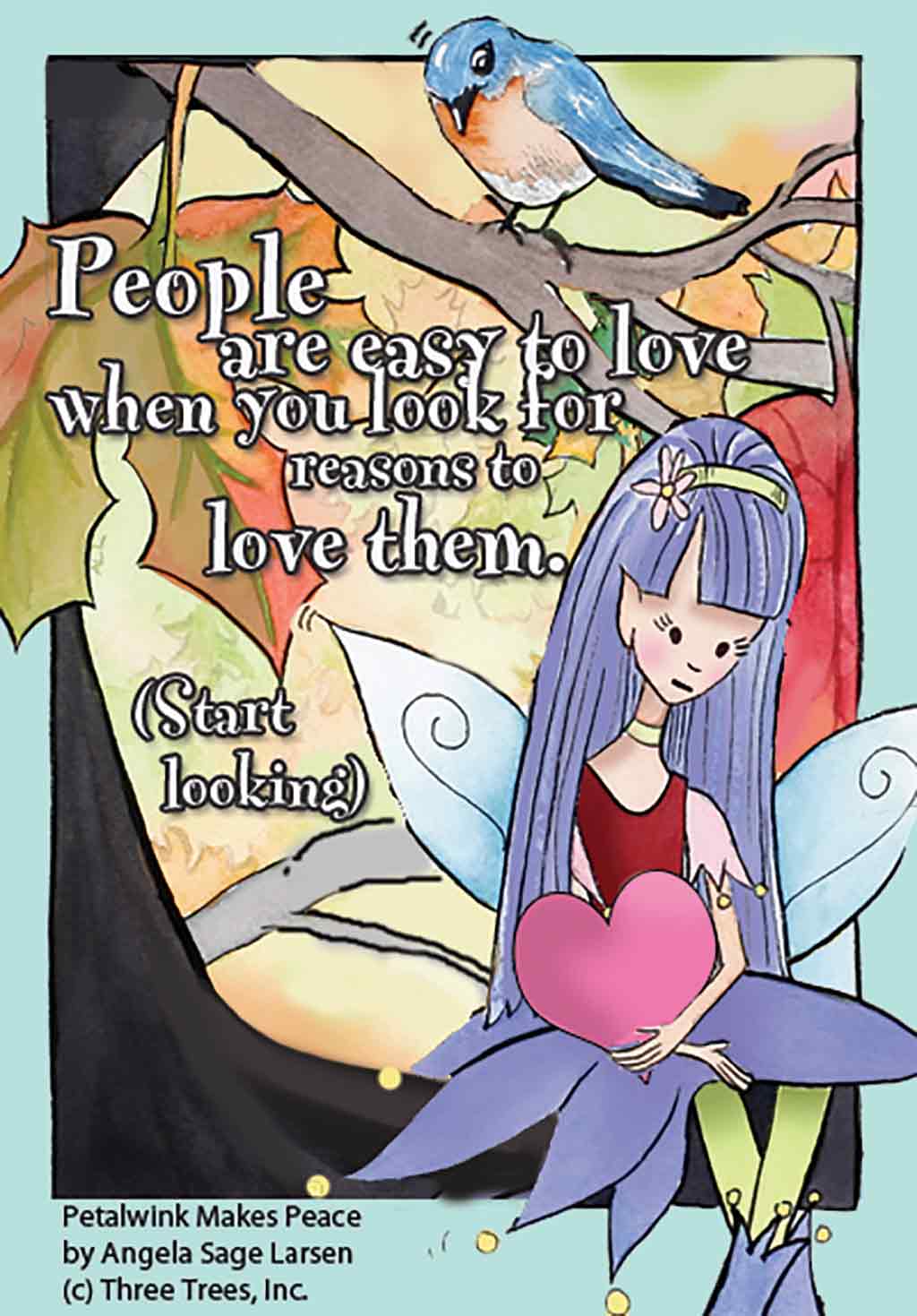 “Why am I waiting until I am retired? Why don’t I do that for a living?” So I started the Petalwink Brand and wrote a series for young teens called The Fifties Chix. (To learn more about Petalwink the Fairy click here.) (To learn more about The Fifties Chix, click here. )
“Why am I waiting until I am retired? Why don’t I do that for a living?” So I started the Petalwink Brand and wrote a series for young teens called The Fifties Chix. (To learn more about Petalwink the Fairy click here.) (To learn more about The Fifties Chix, click here. )
Fifties Chix and Petalwink both came from drawings. I was actually drawing and painting the characters and having fun imagining who these characters were. I asked, “What if?” And that’s how it all started.
My husband Whit and I had an art gallery in California. The gallery was full of my artwork. At the same time I was being commissioned to do murals. I never did the same mural twice in a row. People always wanted different things so each mural was custom artwork. That made life interesting.
There were requests for three fairy murals in a row. By the time I finished the third fairy mural, I was painting the same little character. Even after I was done with the mural, I was still drawing, sketching and daydreaming about this character. That is where Petalwink came from. This is also where the socially conscious aspect came from.
Around the same time I was becoming obsessed with my Petalwink, there were other people and corporations coming up with images that seemed to dumb down girlhood. Their images were all about mass marketing.  Part of their message was that girls are lacking something and that their main priority needed to be being pretty so they could be rescued.
Part of their message was that girls are lacking something and that their main priority needed to be being pretty so they could be rescued.
I thought that Petalwink’s message ran completely counter to that. As I was daydreaming the Petalwink character, I heard a little empowering voice that said, “You can do it. You have something to give.” So Petalwink was all about believing in your self and believing in the greater good. It wasn’t just focused on self but also on the greater good. The idea is that each one of us has a place in that greater good. We all have something good to contribute.
When you are a child you believe that. You know there is something special about yourself. You know you have something special to give. I wanted Petalwink to have that message of sweetness and innocence and allow children to remain innocent children a little longer. There is no hurry to grow up. I wanted to let children know that right where they are is right where they need to be and they have something special to give.
From an artistic standpoint, Petalwink was developing not only from an artistic view but also that of a character education standpoint. It was the perfect storm. Petalwink embodied a lot of my ideals all in one tiny little character.
2. What does this mission mean to you?
Petalwink gets to be my voice. All of us have something to say and especially children. A lot of times story times is not just about Petalwink’s message but it is also about, “OK. What is it that you have to say?” 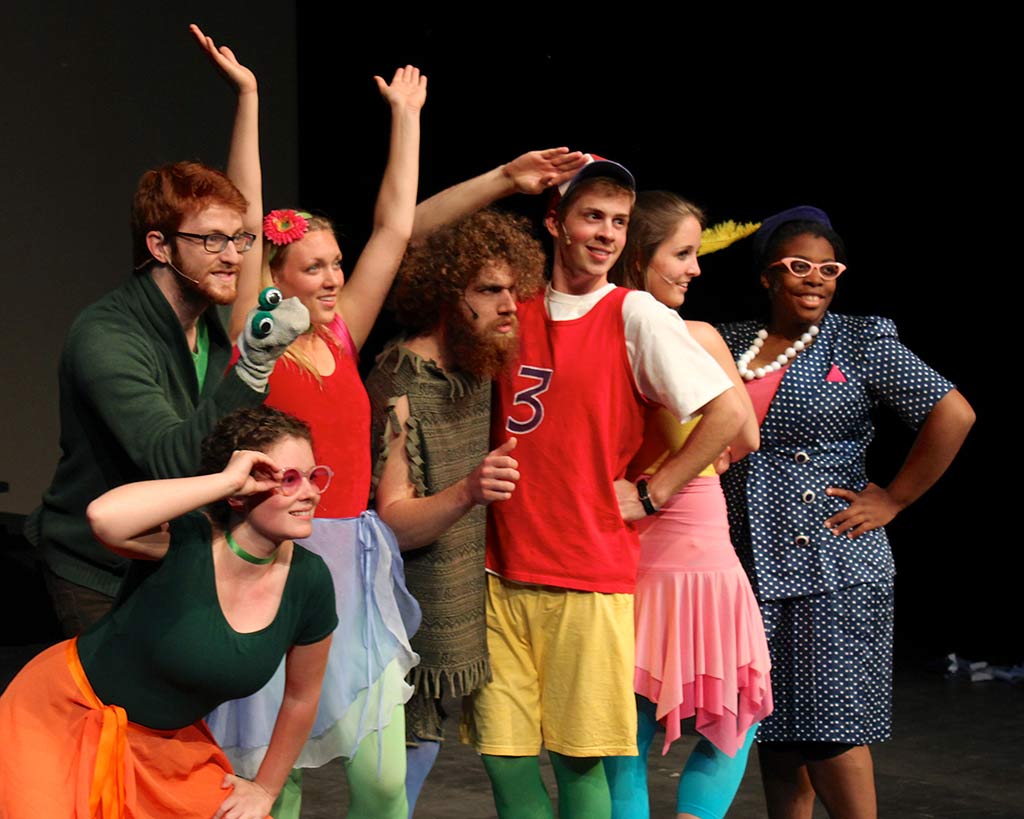 Kids have a voice and Petalwink is all about having them find that voice. It’s not about shutting up but finding what children have to contribute and in what way they can contribute.
Kids have a voice and Petalwink is all about having them find that voice. It’s not about shutting up but finding what children have to contribute and in what way they can contribute.
I feel like Petalwink and the Fifties Chix as well have become my voice. It’s nice because if kids feel shy it might be harder to shut up. But when you are a fiction writer or when you are being creative, your voice can be heard. The focus is not on you but on the thing you are creating. There is a freedom and liberation in being creative. That’s why it is so freeing and important to encourage creativity and imagination in kids. That is how they are going to find their voice and how they can make a contribution in a unique way.
3. What was your best day being an author, writer, illustrator, composer, coach, and creator of Petalwink the Fairy Books and Musical Brand and the Fifties Chix Series?
My best days all have something in common — they are the same day or the day immediately following my worst days. There is always some devastating news or some devastating event or some devastating decision that my husband and I have had to make.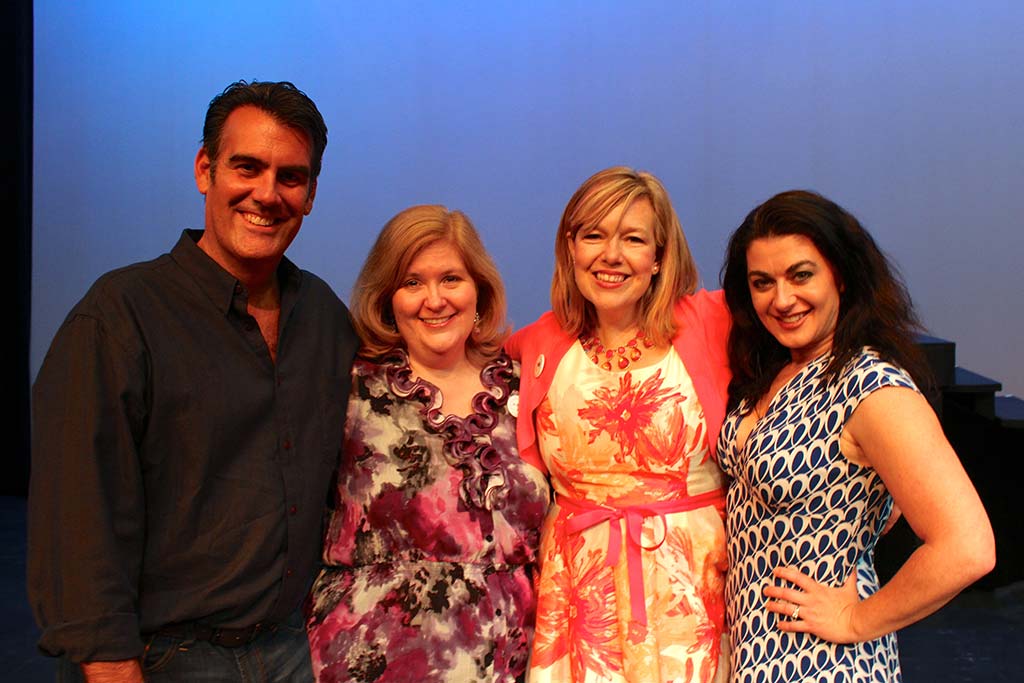 This is the day when I thought, “Well, this is it. It’s the end of the line. Now we can’t go any further.”
This is the day when I thought, “Well, this is it. It’s the end of the line. Now we can’t go any further.”
Whit, my husband is my business manager, so it has been really fantastic that we have been able to work together. I couldn’t have done it without my partner. It’s a blessing and a luxury to have him sharing my days. Pictured is Whit Larsen (business manager), Trish Brown (musical director), Angela Sage Larsen, and Deborah Hurwitz (lyricist and composer).
But the best days have always come out of the worst day. It is like a Phoenix thing – a rising from the ashes. Whenever Whit and I thought it was the end of the line, there has been some little spark of hope or some total reversal in direction.
Here’s an example. At the beginning of Petalwink, we had a brand manager. A large business had agreed to work with us. They were going to publish our line of books and help us establish a brand of merchandising. They loved the message. They loved Petalwink. We were so thrilled to be working with them.
But after a while, absolutely nothing was happening. We waited as long as we could and finally decided that we were going to have to part ways with this company. We even thought we were such idiots for deciding to do so. This company is internationally known. They are so good at what they do. Why would we part ways? We had to part ways because they weren’t doing anything for us. We were a very small fish in a very big pond.
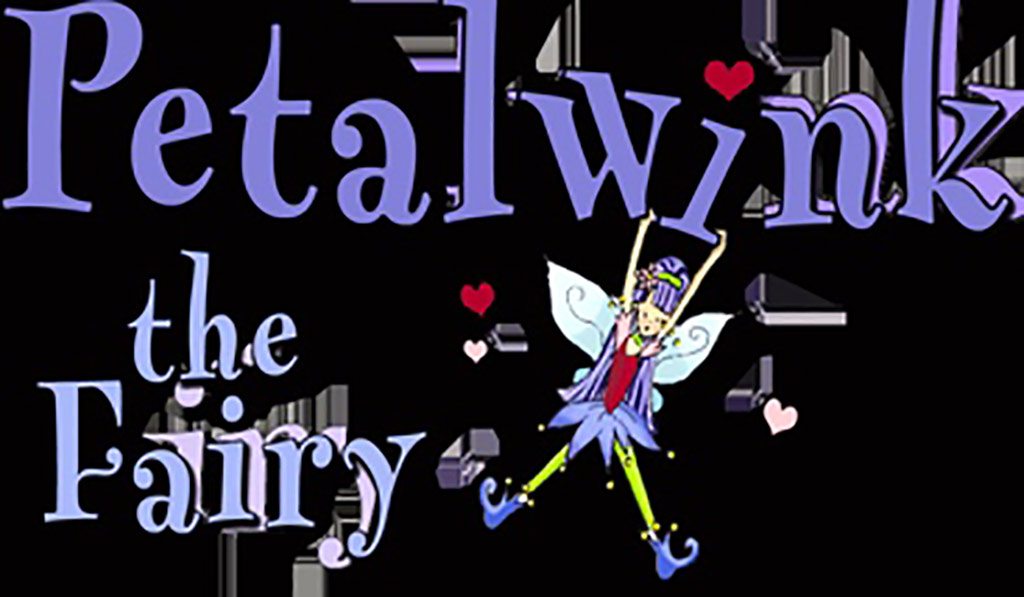 We realized we would have to cut lose from them. But it felt like that would be the end of the line for our idea. The day that we delivered a letter to them saying, “We can’t work with you any more”, we felt foolish and stupid and hopeless and all these horrible emotions. On our way back from delivering that letter, a friend stopped by. This person said, “I have something I want to show you.” She showed us this really beautiful book. I said, “Where was this book published?” She told us it was self-published. I asked the author, “How did you do that?” (This was in 2006 before self-publishing was a big thing.)
We realized we would have to cut lose from them. But it felt like that would be the end of the line for our idea. The day that we delivered a letter to them saying, “We can’t work with you any more”, we felt foolish and stupid and hopeless and all these horrible emotions. On our way back from delivering that letter, a friend stopped by. This person said, “I have something I want to show you.” She showed us this really beautiful book. I said, “Where was this book published?” She told us it was self-published. I asked the author, “How did you do that?” (This was in 2006 before self-publishing was a big thing.)
The author told us she would like to meet with us. She mentored us. After that, Whit and I self-published our first book. Within a year of self-publishing we had a publisher who published the rest of the series. One thing led to another. But none of that would have happened without making room and letting that other company go. That morning started out as the worst day and by the end of the day it was the best day because we said, “Oh my, we are headed in a whole new direction.” I wouldn’t have known that when I woke up that morning.
4. What was your worst day being an author, writer, illustrator, composer, coach, and creator of Petalwink the Fairy Books and Musical Brand and the Fifties Chix Series?
My worst day was also one of my best days. We were feeling financially devastated by all the sacrifices we had to make to keep Petalwink going and to keep expanding the brand. We were ending our relationship with the publisher and there were all these books that were printed that were going to be sold for pennies on the dollar. This would have killed our brand. 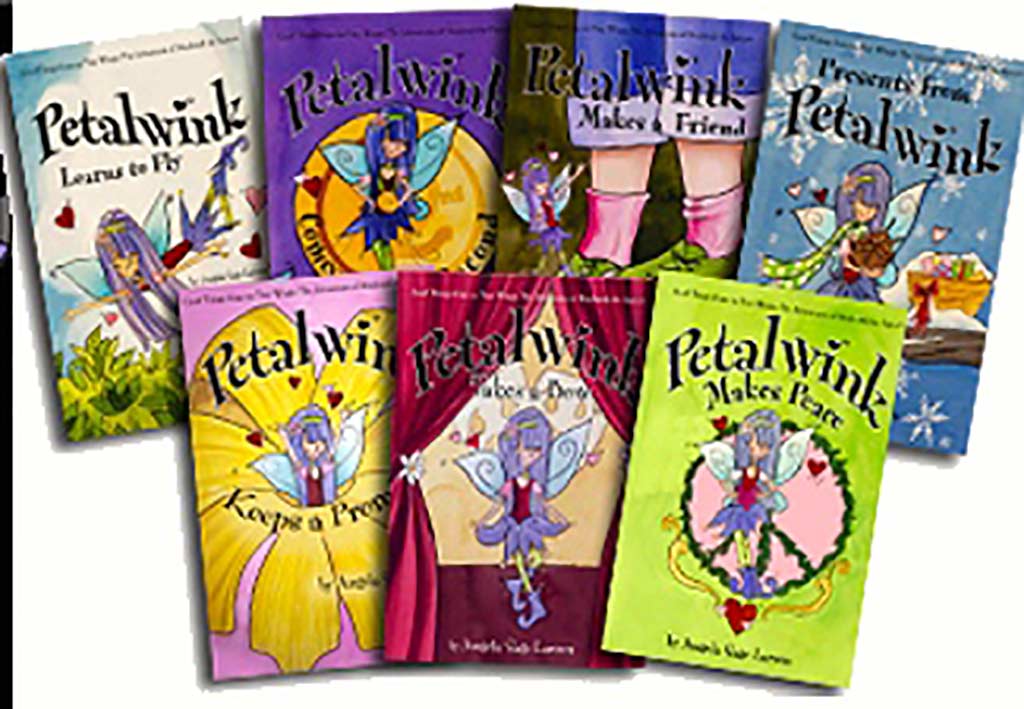 We would have walked into a store and seen all our books selling for only a dollar. There would be no recovery from that.
We would have walked into a store and seen all our books selling for only a dollar. There would be no recovery from that.
We had no way that we could buy the books from the publisher. There were no prospects for doing business in the future. If we worked with another publisher, they might be willing to buy the books or stock them. But we didn’t know what was going to happen.
That night I went on Facebook and decided to see what other people were up to and champion good news. I went on a friend’s Facebook page and saw how she had just received something good. I thought, “Oh how nice for her. But I made some pun or remark and was trying to get myself out of the muck of our situation. Another woman thought what I had written on Facebook was funny. She made a pun. We had this little pun war thing going. I felt better. It was really late at night and I ended up going to bed.
The next morning, I had an email from this stranger who was making puns with me. She said, “I thought your comments were hilarious.” I think we were the only ones getting a kick out of it, but it made me wonder, “Who is this person.” She went on my Petalwink page to see Petalwink. She told me, “Just so you know, we’re going to work together because my partner and I have an aerial choreography company and we put aerial shows up like Cirque du Soleil. We’ve been looking for a kids’ show.” I thought, “That’s it. We have to do this show.”
Petalwink the Musical was born that day. 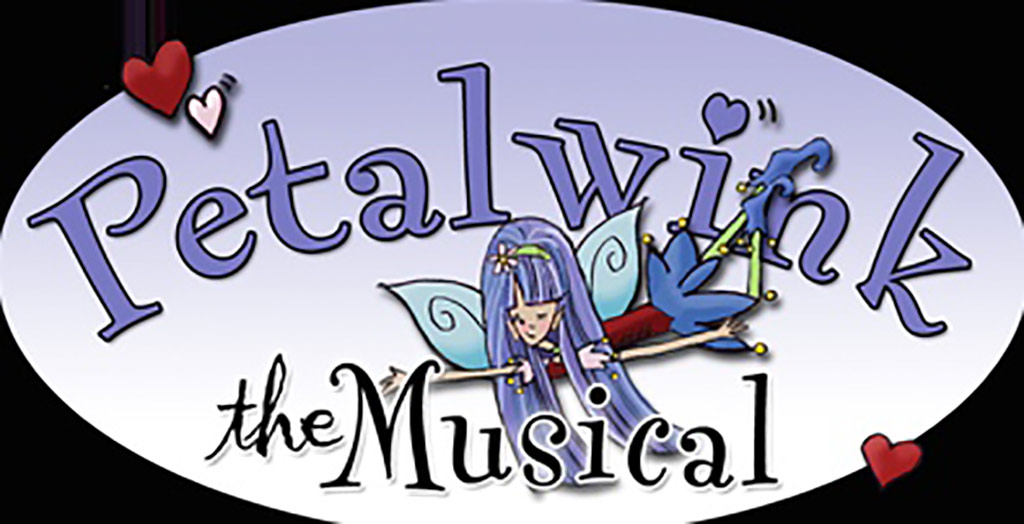 Just that little spark of hope made us say, “We’re going to commit to this stock of Petalwink books.” We didn’t know how we were going to do it, but we committed to buying them. We were totally trusting that this was a right idea and that Petalwink was a right idea that had to go forward. There was no doubt.
Just that little spark of hope made us say, “We’re going to commit to this stock of Petalwink books.” We didn’t know how we were going to do it, but we committed to buying them. We were totally trusting that this was a right idea and that Petalwink was a right idea that had to go forward. There was no doubt.
The day before we were going to tell the publisher that we were going to buy the stock of books, we got an unexpected check from an unexpected source. The check was a gift. The person said, “I thought you might find this helpful.” It was enough to buy the books. It was amazing. We had not only this whole new breath of life for Petalwink the Musical taking it to a higher level literally and figuratively, but then we were also able to buy back our brand and have full creative control. That was our worst day and again our best day. (To learn more about Petalwink the Musical, click here.)
5. How did you survive your worst day?
Just telling Pedalwink’s message means I have to live it. As strange as it might sound, I look at Petalwink and say, “If this were a Petalwink story that I was writing, what would Petalwink do?” 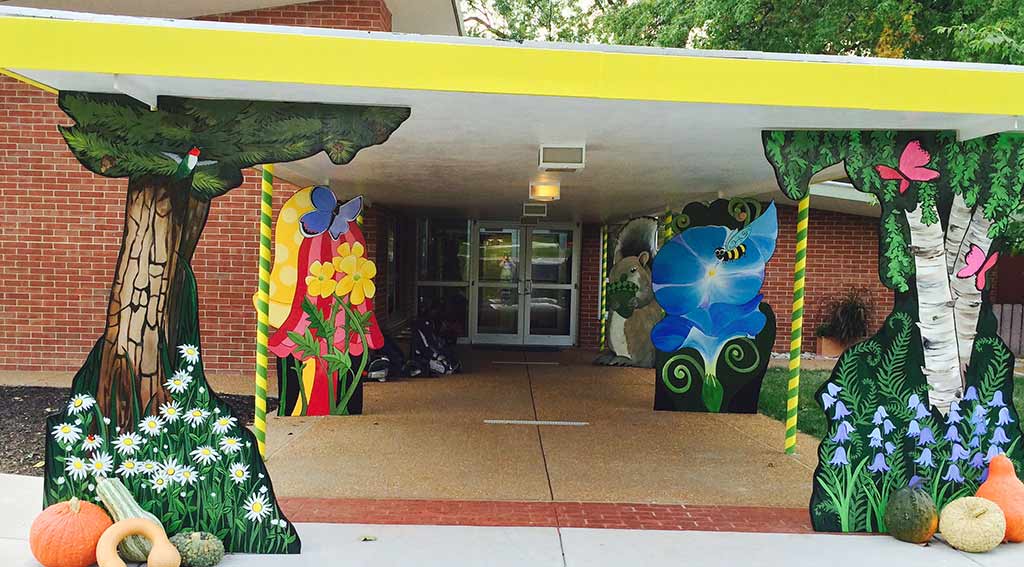 There have been a number of times that I have thought that there’s a lesson in there somewhere and so the Petalwink stories come to mind and I think I too must live that message – forgiveness, believing in yourself, sportsmanship, how to be a good friend. Before or after or during writing these stories I’ve had to actually put those messages into practice in my life. That is the beautiful symmetry of Petalwink – I have the promise that these ideas work because I have had to live them.
There have been a number of times that I have thought that there’s a lesson in there somewhere and so the Petalwink stories come to mind and I think I too must live that message – forgiveness, believing in yourself, sportsmanship, how to be a good friend. Before or after or during writing these stories I’ve had to actually put those messages into practice in my life. That is the beautiful symmetry of Petalwink – I have the promise that these ideas work because I have had to live them.
This work has brought my spiritual practice in alignment with my every day life. I do not keep those separate. One of my husband’s favorite cartoons is a Disney character, Goofy the dog. Goofy is walking down the street and saying, “Hello” to everybody and acting sweet and kind. Then Goofy gets into his car and becomes the opposite. Petalwink has forced me to take my prayerful time quiet time into my day, my career, and my livelihood or else there is zero authenticity in my life. I say that loves work and love must fit – they have to go together or there is no hope for making a living or progressing as a person.
6. What advice do you have for someone who would like to be an author, writer, illustrator, composer and/or coach?
My message is that you keep going. Someone might say, “I’m not good enough.” Someone else might say, “You’re not good enough.” You might say, “I don’t know what I’m doing.”
Nobody knows what I am doing. Nobody has ever done what I am doing before.  Nobody has ever lived my life before. So I can’t look to anybody else. I can’t compare myself with anybody else’s journey. I can’t compare it to anything else I have done before because I haven’t ever lived this day before. Everything is brand new.
Nobody has ever lived my life before. So I can’t look to anybody else. I can’t compare myself with anybody else’s journey. I can’t compare it to anything else I have done before because I haven’t ever lived this day before. Everything is brand new.
Keep going. I’m learning more and more not to make decisions out of fear. If you have to take a part time job because you aren’t able to make ends meet by doing what you love, that is not an excuse to stop doing what you love. You can find time to keep trying and keep creating. It might mean getting up early in the morning or staying up later at night. You keep going, creating, and not letting anything stop you. Even doing a little bit is still keeping going.
We look for all kinds of tricks or magic things to get the job done. Sometimes instead of doing something, we try to find the trick or magic to doing it. But I think the trick is just doing it. When you have a sense of purpose, you treat it like your child. It takes the focus off of “you”. So much of the marketing with children is all about self. Having a mission takes the mission off of your self and you actually find your confidence in having something to give.
You find resilience by having something other than yourself to keep working on. Keep cherishing that and finding a way to move it forward. Nurture whatever talent you have and see that as a contribution and not something that is only an inward turning or focus on self. This is an important key to being emboldened and confident. If I felt like I had to sell myself and be a brand, and promote myself, I would not be able to do it. But the second I start talking about Petalwink, I love it and can’t wait to tell people about her. The less you can take the focus off of your self and focus on your contribution, the better off you are in accomplishing your purpose. (To read more about Angela Sage Larsen and see her blog, click here.)
- « Previous person: Teresa Martinez
- » Next person: Teresa Cranmer